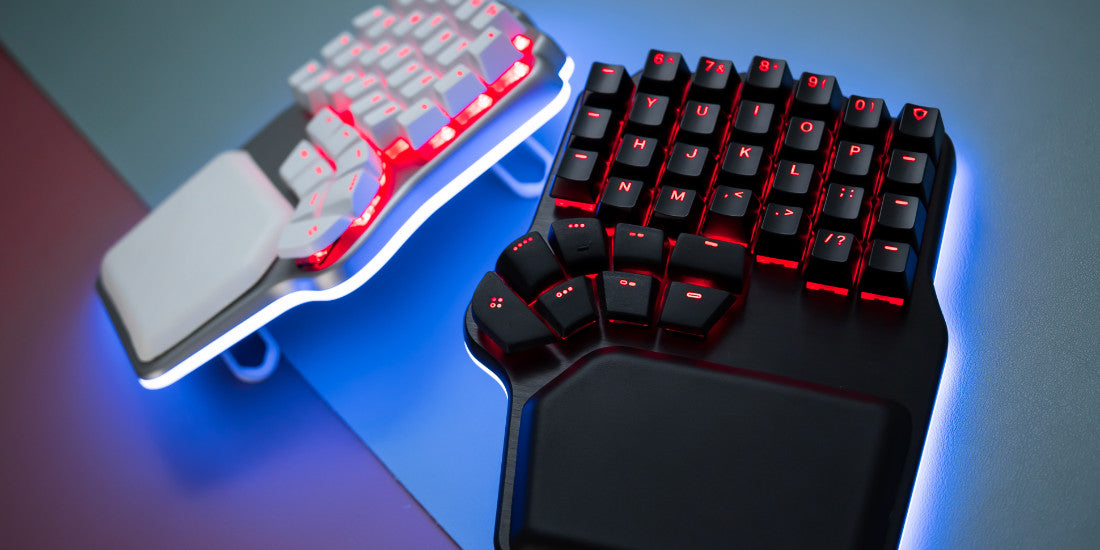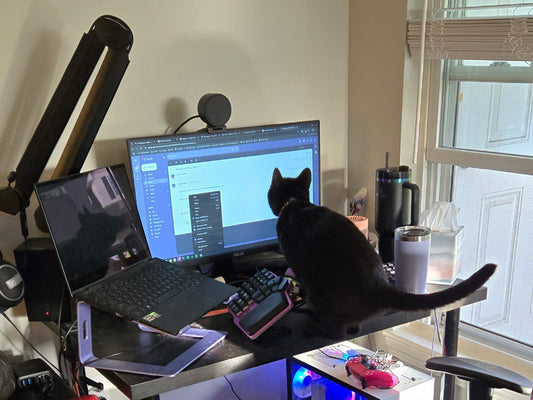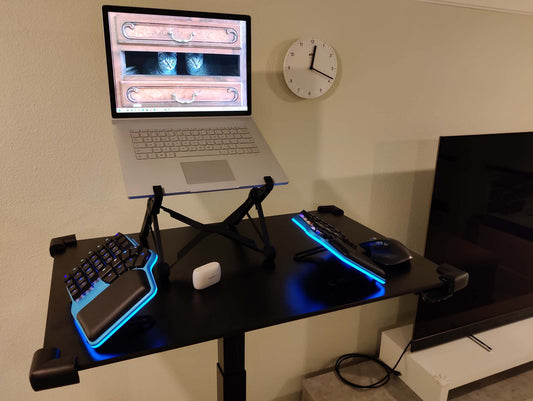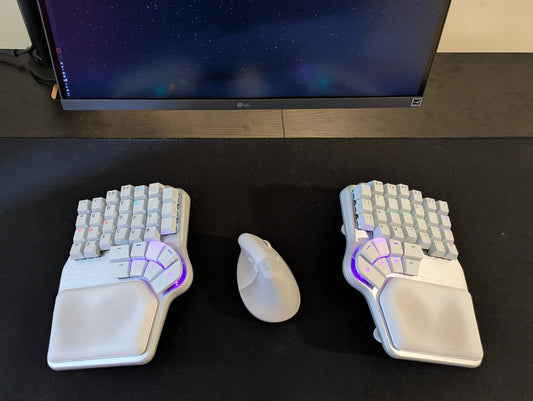A couple of weeks ago, we announced our long-awaited ortholinear keyboard. Although to be clear from the start, even if many times we or others refer to this layout as ortho or ortholinear, it’s really columnar or column staggered.
Anyway, many of you have raised a legitimate question: Why did you decide to make it now? Why didn’t you make an ortholinear columnar keyboard in the first place?
Well, we did. It’s just that not many of you know about it.
The origins
It all started many years ago, when our CEO, Luis, better known as Deilor in the gaming world, was FNATIC League of Legends’ head coach.
During his coaching years, he became aware that many players were suffering from neck, back, and wrist pain, sometimes even leading to injuries.

That’s because esports is one of the most extreme activities done with the keyboard, but the keyboard was never designed for gaming.
One day, a lightbulb went on in his head.
What if he created a keyboard designed for esports professionals? A keyboard that focused on enhancing performance, health, and comfort?
So, back in 2016, with two European League titles under his belt, he quit his coaching role and started working on the first prototype: the Shortcut.
The Shortcut

The Shortcut was designed taking into consideration the shape and natural motion of our hands and finger, and thus, it had a column staggered layout.
However, after manufacturing about 50 prototypes and testing them with users, we found that the Shortcut was not the way to go for our first product.
Don’t get me wrong, the Shortcut was great, a massive improvement over a classic keyboard, but it had one major drawback: the learning curve was too steep for new users.
That’s when we realized that we couldn’t expect someone to take such a leap of faith and jump from a conventional keyboard to something like the Shortcut.
There should be other steps along the way, a series of keyboards that would form what we like to call “The ergonomic journey.” In that analogy, The Shortcut would be the final destination of that journey. Not the first stage.
So, after many deliberations, we decided to hit pause on the Shortcut and develop a different keyboard, one that would be easy to start using but kept all the core improvements.
- A thumb cluster to relocate high-frequency keys to our strongest finger
- A split design to avoid rotating your wrist outwards and help you avoid slouching
- A software that allows you to create custom layers to make the most of your workflow
- A low profile and palm rests and palm pads that help keep a neutral wrist angle, avoiding wrist extension
And that’s how the Dygma Raise was born.
The Dygma Raise
For us, the Dygma Raise is the perfect keyboard to get started in keyboard ergonomics.
It has a conventional layout, and it’s detachable, which means you can begin using it like any other keyboard, and then start exploring all its functionalities, like the split design, the thumbkeys, or the programmable layers.
However, you might reach a point where you feel that you need more.
That’s why we developed a tenting kit for the Dygma Raise, which helps a lot with the pain and discomfort caused by hand pronation (that’s when your hands are facing down, which pinches the muscles in your forearm).
But we were still missing one thing: a keyboard with an ortholinear layout. And you reminded us constantly.
The new ortholinear keyboard
Ortholinear or column staggered layouts are preferred by many. With the keys aligned in columns, there’s less travel distance to reach each key, and it’s always consistent.
We could just have taken the Raise and changed the layout, and that would have been an excellent keyboard, but that’s not who we are. We want to create the best product possible in each category we enter.
It took us a couple of years to build the team, knowledge, and experience to create a truly outstanding keyboard. One that had all the features that others were missing -even if that meant being a little late to the party.
So, we made a huge list, cracked the whip, and ensured our engineers checked every box.
- Ortholinear layout (duh!) Although, as we said, it’s technically columnar or column staggered.
- Split design. So your wrists are comfortably aligned with your forearms.
- Wireless connectivity.This is something most production split keyboards don’t have.
- Easy to reach 8-key thumb clusters. This is one of our proudest features. For us, it was key that any hand size would comfortably reach at least 5-6 keys.
- A built-in tenting and reverse tilting solution. Getting the tenting to work up to 60º with a sleek-yet-sturdy built-in design, with many angles in between, has taken years of development. But we were keen on achieving something that no other keyboard had.
- Ultrabright RGB underglow. Because ergonomic doesn’t have to mean boring. This thing shines like a lightsaber and will make your setup look like it came straight from the future.
And, of course, our usual
- Fully-customizable per-key RGB.
- Integrated palm rests and detachable palm pads.
- Hot-swappable.
- Fully programmable layers and open-source firmware.
- Double-coated anodized aluminum body, in black or silver.

We are also aware that we left out some features along the way.
- For example, our keyboard is neither concave nor has custom sculpted keycaps. We know this slightly reduces finger travel, but for us, it had a significant drawback: it would be much more difficult to find aftermarket custom keycaps, and we all love to customize our keyboards.
- It also doesn’t have dedicated F-keys or arrow keys. Why? You might say. Well, reducing finger stretching and hand movement is key to keyboard ergonomics. So, it doesn’t make much sense to have those keys if we want to encourage people to use layers and place them closer to the home row.
Your next step in the ergonomic journey
Overall, we are thrilled and proud of the final design.
We think it’s perfect for those of you who are used to split keyboards -like the Dygma Raise- and want to take it to the next level and give an ortholinear or columnar keyboard a try.
It’s also a great alternative if you already own other ergonomic keyboards but miss some features, like wireless connectivity, more tenting angles, or a comfortable thumb cluster.
If you are as excited as us, don’t forget to subscribe to our Kickstarter newsletter. That way you can keep up with all the updates and don’t miss out on those sweet early-bird deals once we launch the Kickstarter campaign this spring.
We’ll be back soon with more!









